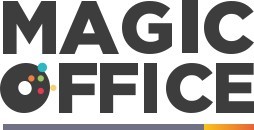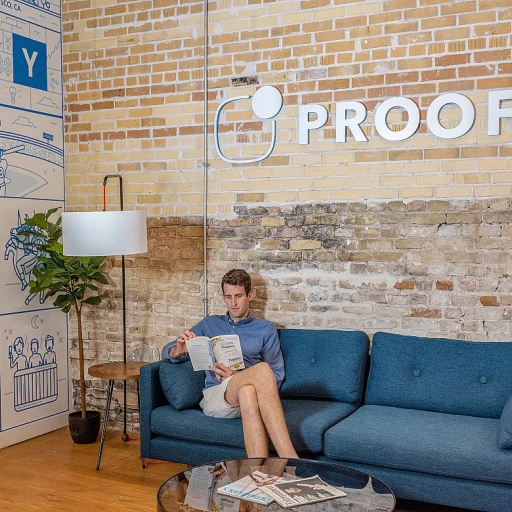
Understanding Net Usable Office Space
Decoding the Elements of Usable Office Space
Maximizing office space efficiency in the UAE involves understanding what constitutes net usable office space. The concept of 'nla', or net lettable area, is crucial as it directly influences the commercial lease agreements and tenant occupancy in real estate. It refers to the actual floor space in a building that is available for tenants. Hence, while measuring office spaces, the emphasis is placed on 'net' rather than 'gross' lettable area, focusing on the usable parts of the office. The method of measurement for calculating usable space often excludes common areas. These common areas included in the gross lettable area (gla) encompass shared facilities like corridors and restrooms, which are unavoidable in any property development but do not directly add to an individual tenant's workspace. When it comes to leasing, commercial real estate entities create legal documents such as lease agreements and templates to outline the specifics of these areas. This ensures clear communication between property services and potential tenants about the leasable areas. Documents detailing legal templates are essential as they specify area measurements, thus reducing ambiguity for all stakeholders. For property management professionals, a precise understanding and accurate nla calculations become imperative. This not only assists in tailoring commercial space to tenant needs but also optimizes the efficiency of the workplace, thereby enhancing the building's value. Exploring multiple workflows for similar activities in Arabian Emirate companies can streamline these processes, supporting a seamless transition from measurement to occupancy.Challenges in Optimizing Office Space
Addressing the Complexities of Space Optimization
In the bustling commercial real estate landscape of the UAE, maximizing office space efficiency requires navigating a complex array of challenges. Key among these is understanding how to balance tenant needs against space constraints, while ensuring that the net lettable area (NLA) is optimally used. The strategic handling of enhancing operational efficiency is critical here.
One major hurdle lies in the accurate measurement of usable and gross lettable areas (GLA). Misunderstanding or miscalculating these figures leads to significant inefficiencies in space utilization. This is why precise NLA calculations are crucial in lease agreements and why property managers employ detailed legal documents and measurement methods. The aim is to discern between areas included in the lease and excluded common areas, such as hallways or lobbies.
- Legal and Financial Documentation: Ensuring legal templates and lease agreements are aligned with UAE building regulations is an essential step in preventing disputes and ensuring that all lettable areas are fully utilized.
- Space Audits: Routine audits of leasable spaces help to identify underutilized floor areas, prompting opportunities for reallocation or redesign of office layouts.
- Tenant Dynamics: The needs of tenants must be balanced with the office manager’s responsibility to optimize the office floor space. The dynamics of tenant requirements present both challenges and opportunities for creative solutions in space management.
The push towards a seamless and efficient utilization of office space in the UAE necessitates close collaboration between office managers and tenants. By addressing these challenges head-on, businesses can create commercially viable and appealing office environments.
Strategies for Efficient Space Utilization
Innovative Steps for an Efficient Office Setup
In the dynamic landscape of the UAE, optimizing office space requires a nuanced approach. It's essential to delve into strategic measures that ensure every inch of the office is utilized effectively, addressing both practical needs and aesthetic values. One crucial strategy in achieving space efficiency is through the meticulous calculation of net lettable area (NLA). This entails understanding the precise difference between gross lettable area (GLA) and NLA, excluding common areas from the total floor space. By determining the NLA accurately, tenants and property management can create legal documents like lease agreements, ensuring transparency and clarity in their lettable area commitments. To further improve space utilization, developing flexible office layouts is key. This can involve the use of modular furniture and multi-purpose areas that can easily adapt to various functions. By fostering an environment that can be reconfigured as needed, businesses can cater to evolving workforce demands, thereby enhancing productivity and tenant satisfaction. Rent optimization also plays a pivotal role in space management. Landlords and commercial real estate stakeholders must understand the legal templates and lease agreements that underpin the lettable area. By structuring lease terms that are fair yet competitive, property managers can maintain high occupancy rates while ensuring financial viability for all parties involved. Additionally, employing cutting-edge technology is instrumental in streamlining space management. Implementing a space management system can provide real-time insights into office utilization patterns, enabling businesses to make data-driven decisions. For more insights into enhancing workspace efficiency with technology, check out this comprehensive guide on enhancing workspace efficiency with a space management system. Embracing these strategies not only optimizes the office floor area but also aligns with the commercial goals of maximizing tenant satisfaction and long-term property value.Balancing Aesthetics and Functionality
Creating a Harmonious Workspace: Style Meets Function
Achieving the right balance between aesthetics and functionality is crucial in optimizing office space in the UAE. While it is essential to foster an environment that is visually appealing, it is also necessary to ensure that the space effectively supports business operations and accommodates tenant needs. When designing lettable areas, consider the following:- Purpose-driven Design: Begin with a clear understanding of the purpose of each area. Whether a meeting room or a break area, each space should be designed to fulfill its function effectively. This increases net usable office space by ensuring every square meter serves a purpose.
- Incorporate Practical Elements: Select furniture and fixtures that are not only stylish but also durable and functional. For instance, choosing modular office setups can help in efficiently utilizing the floor area and adapt to changing team configurations.
- Balance Between Common and Exclusive Areas: While common areas like corridors enhance the aesthetic flow, ensuring these are kept minimal will free up more net lettable areas for office use. This makes the use of floor space as effective as possible.
- Consistent Design Language: Maintain a cohesive design language across the entire building. This consistency in aesthetics helps in establishing brand identity which can attract commercial real estate tenants.
Leveraging Technology for Space Management
Integrating Smart Solutions for Office Space Management
In the dynamic landscape of the UAE's commercial real estate, leveraging technology is pivotal for maximizing office space efficiency. With the increasing demand for flexible and functional workspaces, integrating smart solutions can significantly enhance the management of net lettable areas (NLA) and gross lettable areas (GLA).
One of the primary benefits of technology in space management is the ability to accurately measure and monitor office areas. Advanced software tools can provide precise NLA calculations, ensuring that all usable space is optimized while excluding common areas that are not part of the tenant's lease agreement. This precision is crucial for both landlords and tenants, as it helps in drafting accurate legal documents and lease agreements.
Moreover, technology facilitates the efficient allocation of floor space. Smart sensors and IoT devices can track the usage of different areas within the office, providing insights into which spaces are underutilized. This data-driven approach allows office managers to make informed decisions about reallocating resources or redesigning floor plans to better serve the needs of the tenants.
Another advantage is the simplification of lease management. Digital platforms can streamline the process of handling lease agreements and legal templates, making it easier to manage commercial lease documents. These platforms often include features for tracking lease terms, tenant services, and property maintenance, ensuring that all aspects of the lease are managed efficiently.
Incorporating technology also supports the balance between aesthetics and functionality. With smart building systems, office managers can control lighting, temperature, and other environmental factors to create a comfortable and productive work environment. This not only enhances the tenant experience but also contributes to the overall efficiency of the office space.
In conclusion, leveraging technology is a key strategy for optimizing office space in the UAE. By integrating smart solutions, office managers can ensure that every square meter of lettable area is used effectively, enhancing both the functionality and appeal of the workspace.
Case Studies of Successful Space Optimization
Real World Achievements in Office Space Efficiency
In the UAE, several companies have successfully managed to optimize their office space, reaping significant benefits. Their strategies reflect the principles of effective space utilization, balancing aesthetics and functionality, and leveraging technology.- Property Company A: This company focused on reducing their net lettable area (NLA) by implementing precise measurement techniques. By excluding common areas from their calculations, they managed to maximize usable space for tenants. The use of adjustable workstations minimized floor space requirements while maintaining a sleek office appearance.
- Commercial Firm B: Encountering a challenging lease agreement, the firm consulted legal documents and templates to renegotiate their lettable area. By addressing gaps in their lease terms and focusing on NLA calculations, they managed to free up significant common areas, allowing for better service allocation and improved tenant satisfaction.
- Real Estate Developer C: Emphasizing technology, this developer integrated smart building management systems. These systems monitor floor area usage, facilitating optimal office space re-allocation. The automated method of measurement provided real-time data to foresee and adapt to floor space needs more effectively, thus enhancing space management.













